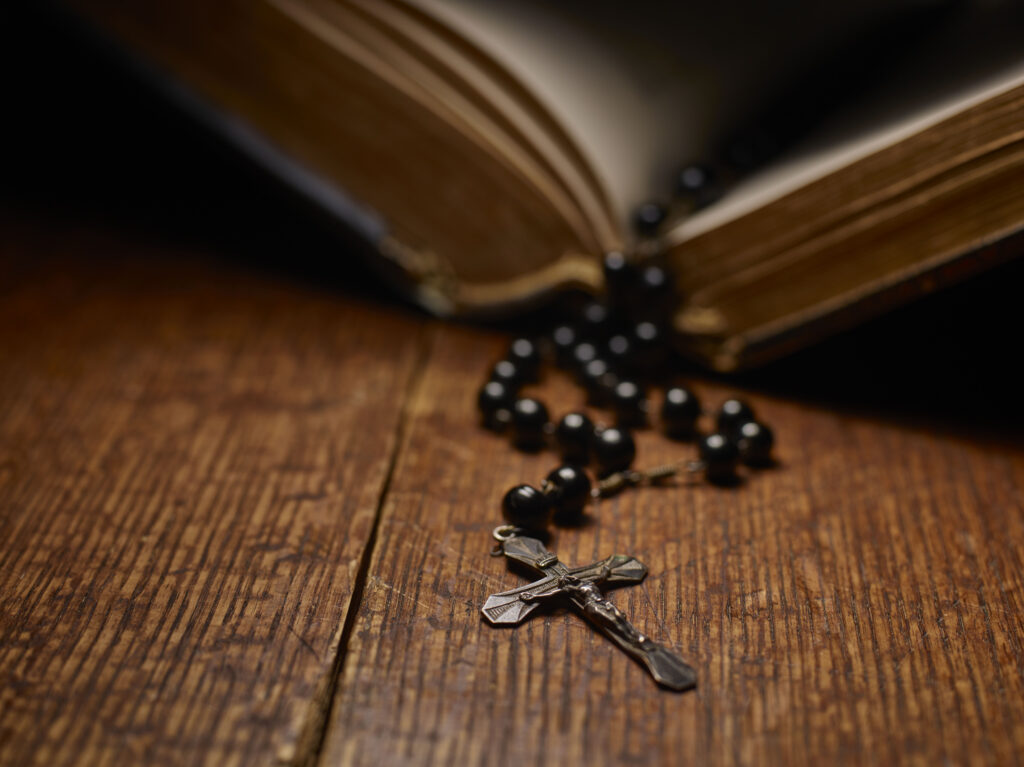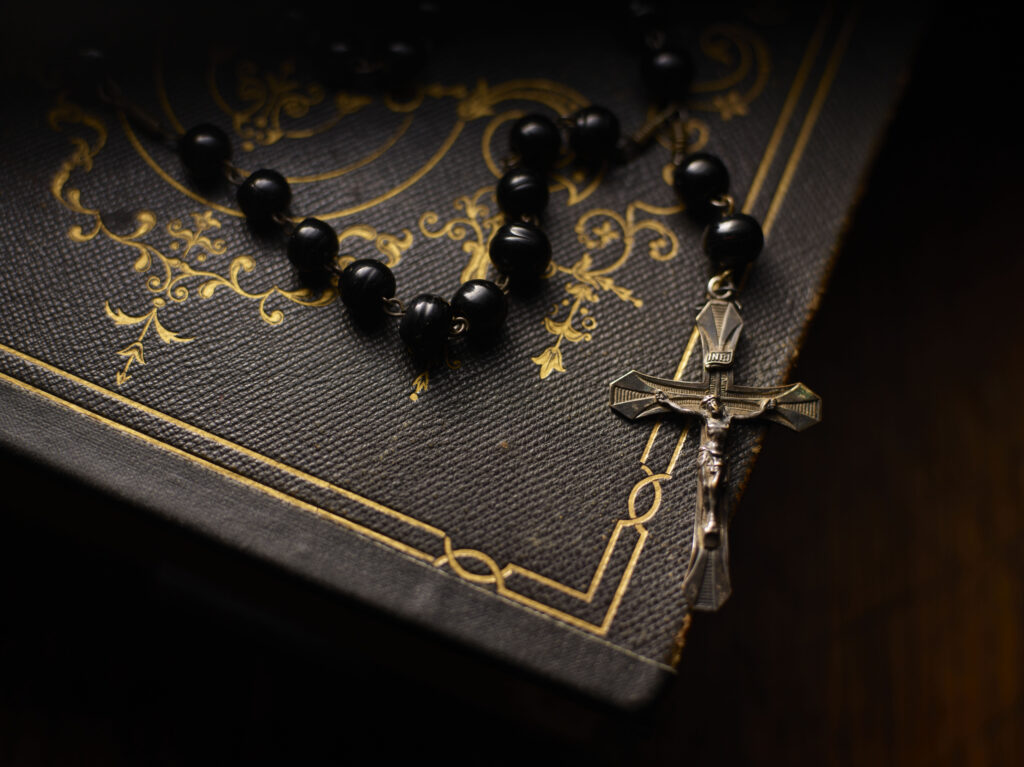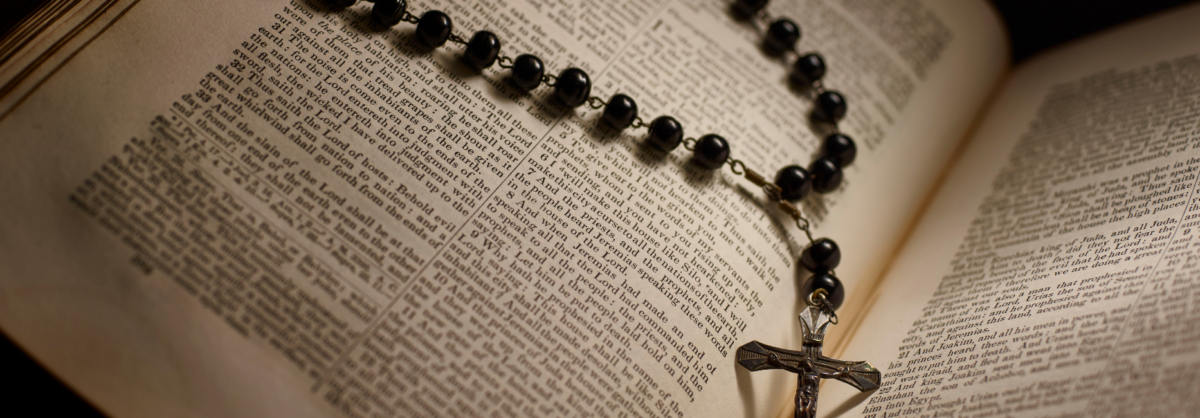The background:
Elizabeth Ann Seton’s rosary will be on display as one of the last objects in the Seeker Gallery of the museum. Several of her rosaries are known to exist, but this one is especially meaningful because it is believed to date to 1805 and her first Holy Communion after entering the Catholic Church.
The rosary is on loan to the museum from the Sisters of Charity of Cincinnati for two years. How did it come to be in Cincinnati? The answer is we really don’t know. Sr. Margaret George, the first Mother Superior of the Sisters of Charity of Cincinnati, was close to Mother Seton. They met when Mother Seton lived in Baltimore in 1808. Sr. Margaret would arrive in Emmitsburg in 1812 with her mother, Bridget Farrell. She entered the Sisters of Charity on February 2, 1812, and pronounced vows July 19, 1813, as part of the first novitiate. Perhaps Margaret had taken it with her when she went to Cincinnati around 1829.
Although Elizabeth was initially Episcopalian, she seemed to have an understanding that the Rosary was a prayer. She first mentions the Rosary when she was in Italy following the death of her husband when she was pondering whether to convert.
…. as another mass had begun, I passed tip toe behind Mrs. Filicchi unable to look round, though everyone is so intent on their prayers and Rosary. . . (CW1-284)
Even when she was struggling to become Catholic, her devotion to Mary was growing and that included teaching her children a part of the prayer the Hail Mary.
Anna coaxes me when we are at our evening prayers to say Hail Mary and all say oh do Ma teach it to us, even little Bec tries to lisp it though she can scarcely speak; and I ask my Saviour why should we not say it, if anyone is in heaven his Mother must be there (CW1-369)

From her school in Baltimore, she wrote:
What shall I say the children sing Adoramus’ all day long. after morning school our Litany of Jesus, after afternoon, our Rosary… (CW2-34)
When Harriet, her sister-in-law, becomes Catholic in the summer of 1809, she writes:
On Tuesday the 25th made my second communion and was entered in the sodality of the Rosary of the Blessed Virgin Mary. (Dirvin – pg.56)
As Harriet was following in the footsteps of Elizabeth, we can assume Elizabeth too was part of this sodality.
What was the Sodality of the Rosary of the Blessed Virgin Mary?
This was a Dominican Confraternity established “to praise and honor the Blessed Virgin Mary and to secure her patronage by the recitation of the Rosary for the mutual spiritual benefit of all the members throughout the world.”
It is believed that this is the sodality that Elizabeth and her sister-in-law, Harriett joined. Elizabeth wanted to be closer to Mary and she wanted that for her Sisters and her students as well. Praying the Rosary was a prayer that drew her closer to Mary.
Elizabeth made reciting the Rosary a part of the initial rules that were established when the Sisters moved into the Stone Farmhouse in the summer of 1809.
In the morning the rules state they will go to church before 9 a.m…
Then they will walk two and two to church saying one-third of the Rosary in going and another in returning. . . (CW2 -738)
At 5:30 they will go to church to adore the Blessed Sacrament, saying the third part of the Rosary. (CW2-738)
In this way they were in the midst of the Rosary prayer all day.

Did you know?
Mother Seton and the Sisters often refer to the rosary as their “beads.”
As the tradition of the rosary developed, so did the reference of using “beads” to pray. The English word “bead” comes from the Middle English word “bede,” which literally means “a prayer.”
The word rosary itself comes from the Latin “rosarium,” meaning a garden or garland of roses. During the Middle Ages, agriculture metaphors were common. Writing often drew comparisons to plowing a field, and collecting prayers was seen as growing a garden or arranging a bouquet. In the most literal sense, the rosary is a “garden” or “bouquet” of prayers.
